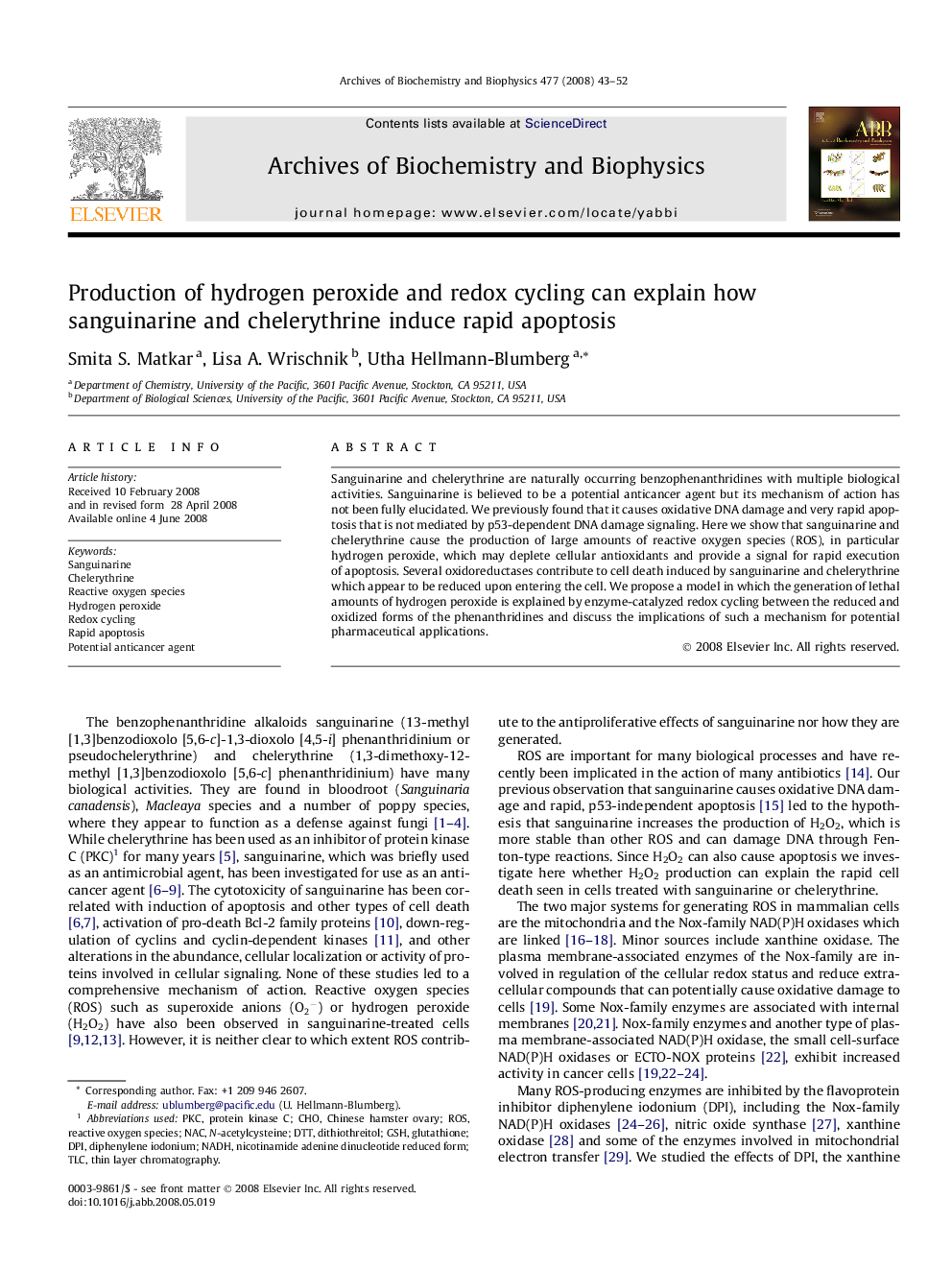| Article ID | Journal | Published Year | Pages | File Type |
|---|---|---|---|---|
| 1926613 | Archives of Biochemistry and Biophysics | 2008 | 10 Pages |
Sanguinarine and chelerythrine are naturally occurring benzophenanthridines with multiple biological activities. Sanguinarine is believed to be a potential anticancer agent but its mechanism of action has not been fully elucidated. We previously found that it causes oxidative DNA damage and very rapid apoptosis that is not mediated by p53-dependent DNA damage signaling. Here we show that sanguinarine and chelerythrine cause the production of large amounts of reactive oxygen species (ROS), in particular hydrogen peroxide, which may deplete cellular antioxidants and provide a signal for rapid execution of apoptosis. Several oxidoreductases contribute to cell death induced by sanguinarine and chelerythrine which appear to be reduced upon entering the cell. We propose a model in which the generation of lethal amounts of hydrogen peroxide is explained by enzyme-catalyzed redox cycling between the reduced and oxidized forms of the phenanthridines and discuss the implications of such a mechanism for potential pharmaceutical applications.
